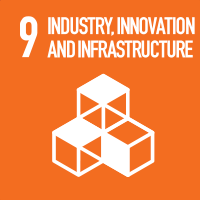Studying at the University of Verona
Here you can find information on the organisational aspects of the Programme, lecture timetables, learning activities and useful contact details for your time at the University, from enrolment to graduation.
Study Plan
This information is intended exclusively for students already enrolled in this course.If you are a new student interested in enrolling, you can find information about the course of study on the course page:
Laurea magistrale in Computer Engineering for intelligent Systems - Enrollment from 2025/2026The Study Plan includes all modules, teaching and learning activities that each student will need to undertake during their time at the University.
Please select your Study Plan based on your enrollment year.
1° Year
| Modules | Credits | TAF | SSD |
|---|
2° Year It will be activated in the A.Y. 2025/2026
| Modules | Credits | TAF | SSD |
|---|
3 modules among the following| Modules | Credits | TAF | SSD |
|---|
| Modules | Credits | TAF | SSD |
|---|
3 modules among the following| Modules | Credits | TAF | SSD |
|---|
4 modules among the following:
- 1st year: Advanced visual computing and 3d modeling, Computer vision, Embedded & IoT systems design, Embedded operating systems, Robotics
- 2nd year: Advanced control systemsLegend | Type of training activity (TTA)
TAF (Type of Educational Activity) All courses and activities are classified into different types of educational activities, indicated by a letter.
Advanced visual computing and 3d modeling (2024/2025)
Teaching code
4S012355
Teacher
Coordinator
Credits
6
Also offered in courses:
- Digital design of the course Master's degree in Computer Engineering for Robotics and Smart Industry
Language
English
Scientific Disciplinary Sector (SSD)
ING-INF/05 - INFORMATION PROCESSING SYSTEMS
Period
Semester 2 dal Mar 3, 2025 al Jun 13, 2025.
Courses Single
Authorized
Learning objectives
The course aims to provide theoretical foundations and practical tools to address the problems of estimating the 3D structure of a scene starting from images, the data driven geometric and photometric 3D modeling of scenes, dynamic analysis of scenes. At the end of the course the student will have to demonstrate the ability to apply the acquired knowledge, in particular i) know ho to handle the diverse data structures used to model scenes and objects 3D, also to apply machine learning methods on them, ii) Know the method used for 3D scanning, vision-based tracking, photometric reconstruction. iii) use computational vision methods in various application scenarios, such as robotics or medical image processing; iv) manage issues of efficiency and accuracy of the techniques. At the end of the course the student will also have to show that he is able to continue his studies independently in the field of visual computing and the analysis of three-dimensional data. Must be able to present the results of a computational vision application and deal with professionals in the sector and have the ability to autonomously adapt to technical evolution and the state of the art in the field of computational vision.
Prerequisites and basic notions
Basic knowledge of image processing, linear algebra, computer vision
Program
3D reconstruction: data structures to represent surfaces and volumetric data, point clouds, meshing, surface recovery, implicit representations,
From 2D to 3D: motion estimation, tracking, structure from motion and SLAM, 3D scanning technologies
Reflectance modeling and materials characterization, Photometric Stereo
3D reconstruction from medical data
Fundamentals of geometry processing
Computational design and digital manufacturing
Bibliography
Didactic methods
Written test on all teaching topics, through open questions and exercises, for a duration of 2 hours (maximum score 24/30) and homework evaluation (max 10/30) replaced by a project for non-attending students. There are no intermediate tests.
Learning assessment procedures
Written test on all teaching topics, through open questions and exercises, for a duration of 2 hours (maximum score 24/30) and homework evaluation (max 10/30) replaced by a project for non-attending students. There are no intermediate tests.
Evaluation criteria
To pass the exam, students must demonstrate to:
-have understood the concepts underlying the representation and processing of three-dimensional information, 3D scanning, the extraction and processing of surface geometry, the coding of attributes useful for graphic rendering and visualization, the reconstruction of geometric information for medical diagnosis from volumetric data;
-be able to present your arguments in a precise and organic way; know how to apply the knowledge acquired to solve application problems presented
Criteria for the composition of the final grade
The final grade will be the sum of the written evaluation and the practical test. The test is passed if the grade of the written test is higher than 14 and the grade of the practical test is higher than 4. If the sum of the scores is higher than 30, a score of 30 cum laude will be assigned.
Exam language
Inglese (italiano opzionale)


